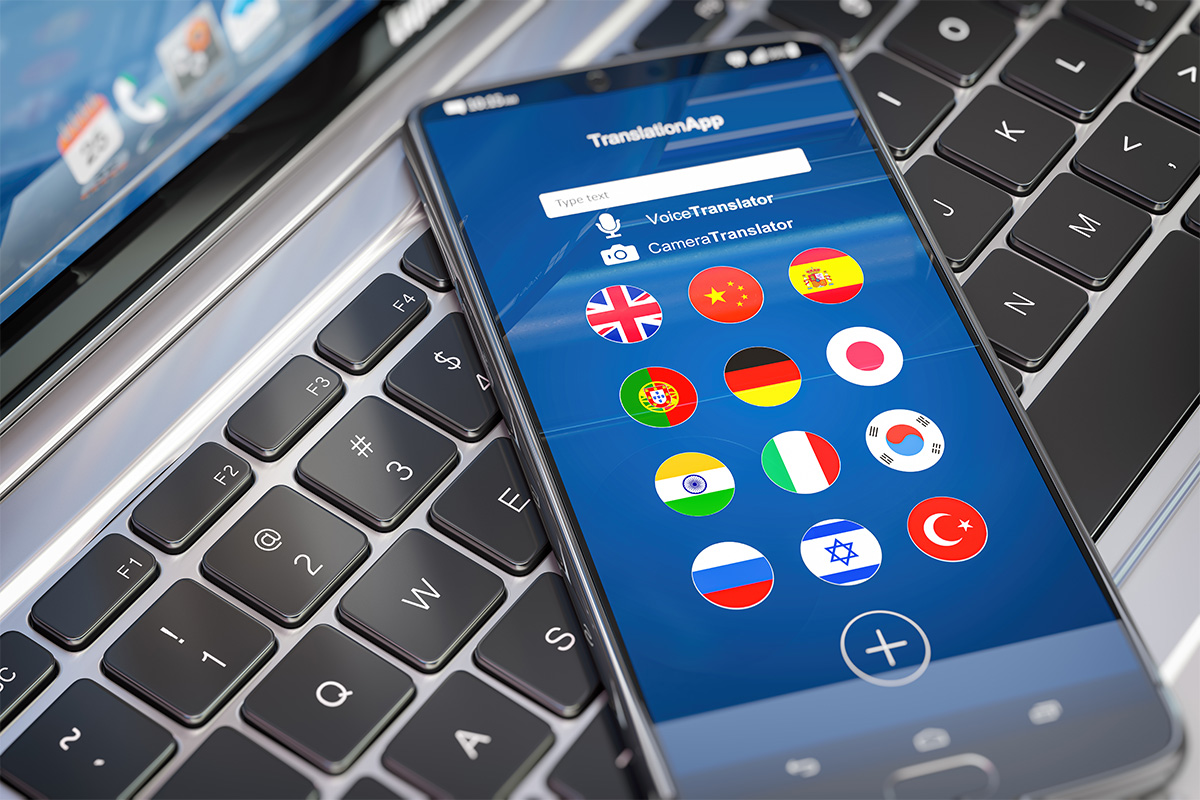What’s the Difference Between Translation and Localization?
Localization - Translation

For most of human history, geography determined who you could form relationships with. Even if you weren’t locked in by mountain ranges or wholly dependent on living next to a water source for your survival, you could only access the people immediately around you at any given time. That couldn’t be more different from the world we live in today. Now, a total of five billion people use the internet to stay in touch with friends and conduct any number of other activities.
And in an increasingly connected world, translation and localization play a crucial role in further expanding our opportunities to connect. For example, the translation service market grew a whopping 40% during COVID-19, and demand for localization services is skyrocketing in certain sectors like utilities, social networks, gaming, healthcare, software products, and entertainment.
Most people aren’t confused about the benefits of translation. Translation is undoubtedly vital in disseminating new information, sharing knowledge, and spreading new ideas. But are you familiar with localization and why it’s a critical step beyond just translating?
That’s what we’re going to be getting into today. We’ll explore key differences between translation and localization in this piece, so buckle up!
Key Differences Between Translation and Localization
If you start delving deeper into any topic, you’ll soon be bit by tons of confusing jargon. It’s no different in the translation and localization industry. And much of that confusion starts with the terms translation and localization. Often, these terms are used interchangeably, but they actually have distinct meanings. So, what’s the difference?
At its most basic level, translation is about adapting a message for a new audience, and localization is about adapting the experience for a new audience. Localization typically starts with translation, but it goes much further – it extends to adapting every aspect of your app or product to fit your new audience’s preferences.
Now we have a clearer understanding of the difference, let’s look at some more specific ways translation and localization differ.
1. Localization Involves Images
Localization goes beyond translating text for different languages and into changing graphics for different cultures. Everything from colors to sports iconography to hand gestures can carry different meanings in different cultures, and it’s important to pay attention to these differences, so you don’t alienate your target audience.
Not localizing your images could lead to confusion, offense, or simply make your new audience think your content isn’t for them. For example, American Football is largely non-existent to the rest of the world. Sure, most non-Americans know what it is, but they don’t follow it closely. So, an image that uses American football to convey a message will likely fall flat outside the US.
2. Localization Goes Deeper Than Translation
When British children read To Kill a Mockingbird in school, they read it as it was written, in American English. This makes perfect sense – members of both countries can understand American English and British English, and the use of American English here is integral to the story and setting.
However, this isn’t true when adapting content for English-speaking countries beyond the US. Do you need to translate? No, but you do need to localize. This means things like using apple crumble instead of apple pie (pies are typically savory in the UK). And replacing words like ‘elevator’ with ‘lift’ or ‘vacation’ with ‘holiday’ . Sometimes cultures can have similar but not identical idioms, and it’s vital to get these right too. For example, while you might say “knock on wood” in the US, in the UK, you would say “touch wood.”
3. Localization Is Sometimes Optional
While localization offers many benefits, it’s important to note that not all content needs it. For example, informational or directive content sometimes only needs translation. Think things like maps or directions, appliance instruction manuals, legal documents, and subtitles on certain videos.
In simple words, translation is neutral to cultural differences, and some content should be too.
4. Emotive Content Needs Localization
While translation is appropriate for technical subjects like medicine, law, science, and finance, localization is best suited for emotive content. Your website copy, blog posts, and marketing material are more likely to resonate with your target region and culture if you provide regional specificity through your words and graphics.
5. Localization Considers Functional Content
Cultural content deals with shapes, colors, images, etiquette, humor, symbols, and societal values. Cultural content usually makes up the lion’s share of the discussion in localization, but it’s not the only thing you need to pay attention to.
Localization also considers functional content like date and time formats, telephone number formats, measurements, and weights. For example, the US date format is month-day-year, while the UK style is day-month-year. Similarly, while the imperial system is favored in the US (outside of science), the metric system is favored almost everywhere else.
Localizing functional content is critical to avoiding confusion when entering new markets. For example, while expressing weight in pounds rather than kilograms might result in blank looks from your new audience, not localizing dates can have a bigger impact. Suppose you’re launching a new service to all of your customers on August 6, 2022. If you use the US format 08/06/2022 for your Mexican audience, they will understand this to mean June 8, 2022.
Wrapping Up
Translation and localization share one fundamental goal – adapting a message for a new audience. However, they differ in how they go about this. Translation is primarily focused on adapting the language of a message to be understood by the new audience, but it’s neutral to cultural and often functional content.
By contrast, localization includes visual, cultural, and functional solutions to ensure your brand experiences resonate with your global customers.
And that’s a wrap! We hope this guide was helpful in your translation and localization journey.



